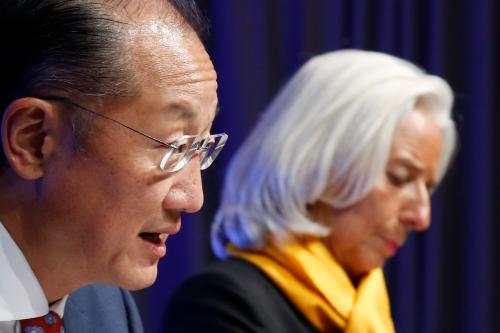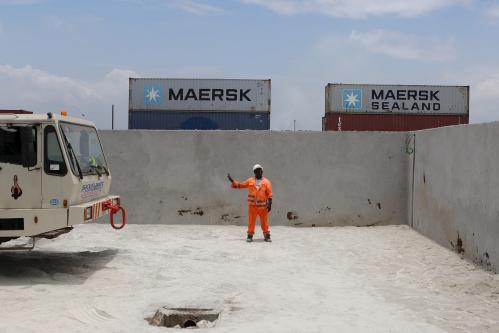Protesters in South Africa call for President Zuma’s resignation
On Wednesday, thousands of protestors took to the streets of South Africa’s major cities to call for the resignation of President Jacob Zuma after he dismissed two finance ministers in less than one week—moves that raised serious concerns among the public about Zuma’s ability to effectively govern and provoked intense reactions from equity and bond markets.
Last week, President Zuma unexpectedly sacked Finance Minister Nhlanhla Nene on December 9 and filled his position with a relatively unknown appointee, David van Rooyen. As a result, the Johannesburg Stock Exchange (JSE) all-share index fell 3 percent in two days. However, just four days later, he recalled van Rooyen and replaced him with Pravin Gordhan, the well-respected former finance minister from 2009 to May 2014. While Gordhan’s appointment helped allay market fears and resulted in 2.6 percent increase in the JSE all-share index (above the closing price on December 9), Zuma’s decision to fire Nene (without an explicit reason) and appoint van Rooyen (who has no experience in government finance) has raised broader questions about Zuma’s leadership. These concerns—compounded with a slew of other issues, including the recent downgrading of South Africa’s credit rating and charges of pervasive corruption within the government—served to undercut confidence in the presidency and drive up anti-Zuma sentiment.
African markets react to U.S. Federal Reserve’s interest rate hike
This week, the U.S. Federal Reserve announced its decision to increase the benchmark interest rate for the first time since 2006. The Federal Open Market Committee decided to raise the rates to a range between 0.25 and 0.5, up from a 0 to 0.25 range. The highly anticipated hike “marks the end of an extraordinary period,” which started during the 2008 financial crisis when low interest rates were adopted in order to boost the U.S. economy.
In the last decade, with globalization, developing countries have become increasingly exposed to global markets. Even though the increased exposure has led to improved macroeconomic and financial integration, these countries have also become increasingly vulnerable to the risks associated with domestic policies in foreign countries, as seen with the aftermath of the rate hikes. This rate hike is expected to affect emerging and developing economies in several ways. First, as the rate gradually increases, the U.S. dollar will continue to strengthen; so if a country owes large debts in U.S. currency, its debt becomes increasingly expensive. This is especially the case in some African countries—notably Ghana, South Africa, and Angola—which have accumulated high debt levels, with said debt being in U.S. currency. Second, investors are increasingly likely to pull their investments away from emerging markets and redirect them towards the United States, where their investments can now yield greater returns. A third potential drawback for African countries is tied to the drop in commodity prices, which has hindered the national budget of resource-rich African countries, causing them to borrow externally in an climate with high borrowing costs and low commodity prices.
The United Nations Development Program releases 2015 Human Development Report
This week, the United Nations Development Program (UNDP) released the 2015 Human Development Report. This year, the report focuses the relationship between work and human development. The report’s main argument states that the notion of “work” goes beyond the common definition—as only a function of jobs and employment— to the role that finding decent work has for addressing the world’s development challenges. The report’s key finding states that while technological advancement has increased employment and in turn improved human development, youth unemployment remains one of the biggest challenges that the developing world faces.
Since 2000, the region has experienced the fastest annual growth rate in the Human Development Index among all regions. Still, there remain important challenges to overcome. Despite having 12 countries in the high or medium human development cluster, the region on average remains in the low human development group. One of the challenges the region faces in terms of employment is the high level of informal employment: 75 percent of men and 61 percent of women are employed by the informal economy. Additionally, the gender wage gap noticeably pronounced in the region, as they earn 21 percent less than their male counterparts. The report concludes by suggesting that greater inclusion of women and youth in work will boost human development in sub-Saharan Africa.
The Brookings Institution is committed to quality, independence, and impact.
We are supported by a diverse array of funders. In line with our values and policies, each Brookings publication represents the sole views of its author(s).







Commentary
Africa in the News: South African protesters call for Zuma’s resignation; U.S. interest rate hike affects African economies, and UNDP releases 2015 Human Development Report
December 18, 2015